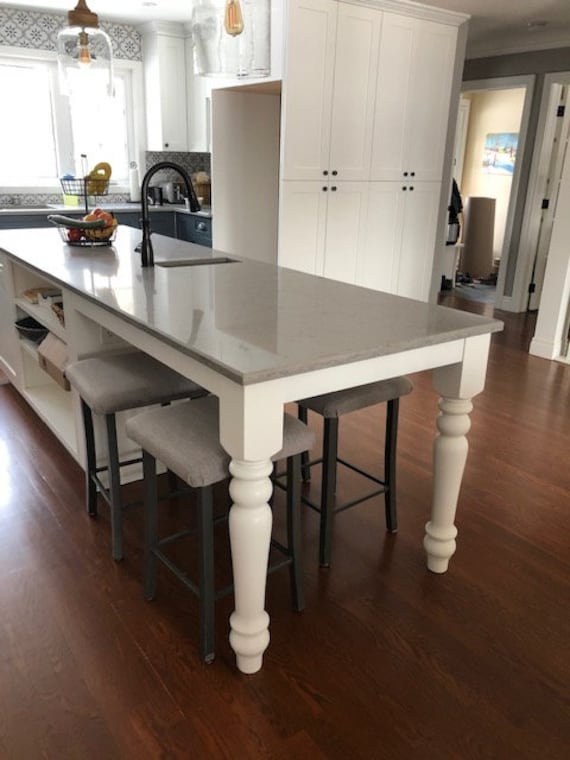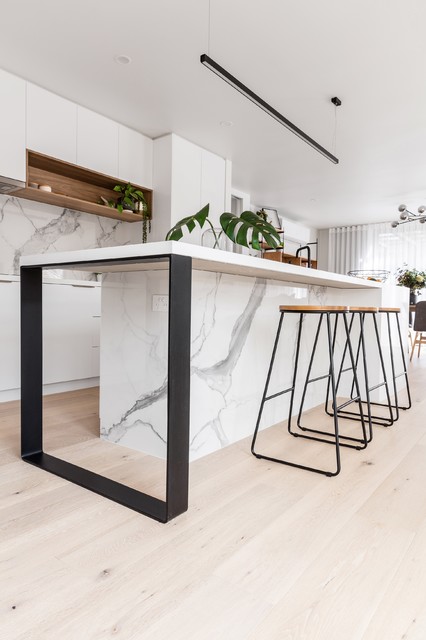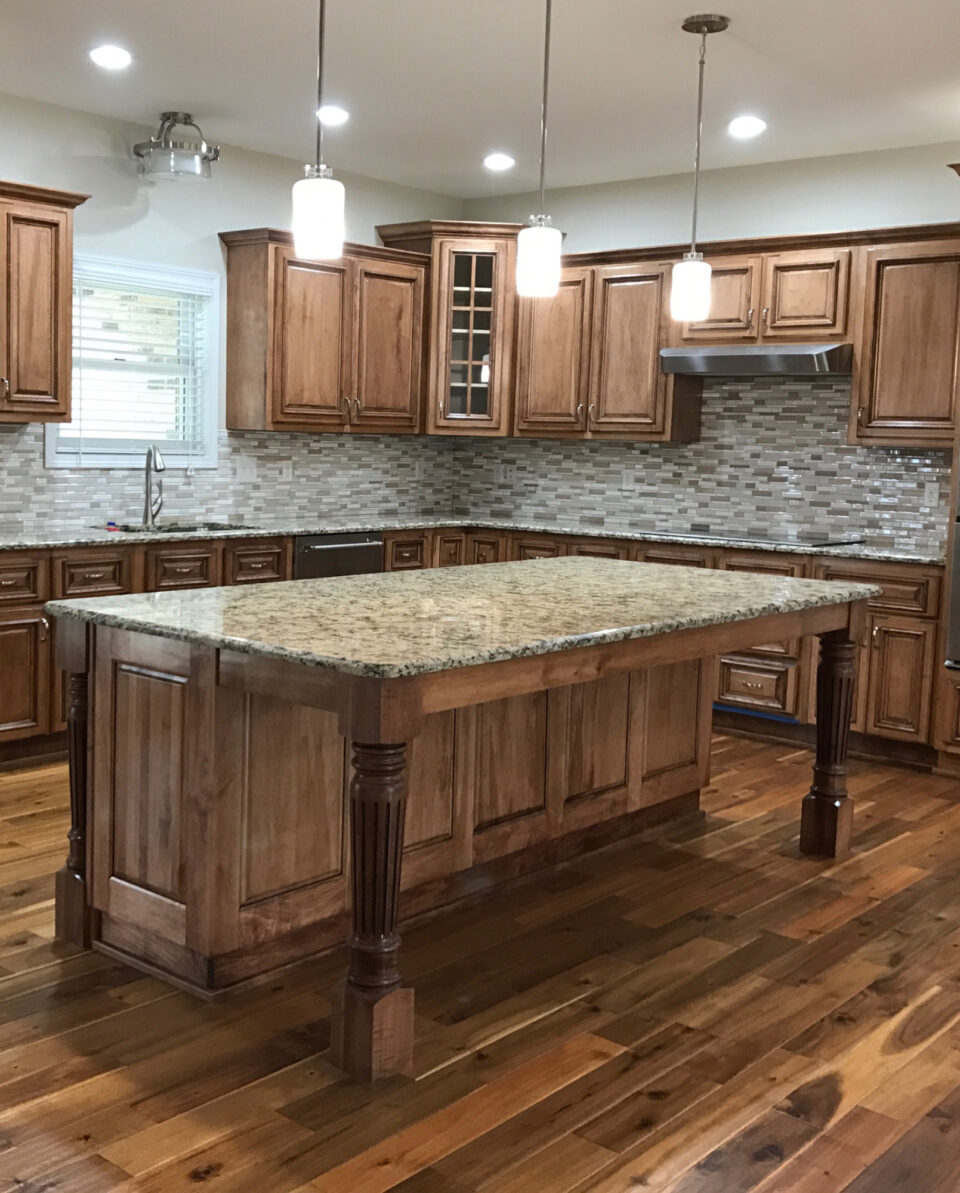Change Your Area with Innovative Kitchen Island Leg Layouts
Change Your Area with Innovative Kitchen Island Leg Layouts
Blog Article
Top Factors To Consider When Picking a Kitchen Area Island Leg for Modern Kitchen Interiors
In the realm of modern kitchen interiors, the selection of a cooking area island leg is essential, influencing both visual appeals and capability. Trick considerations consist of the selection of materials that integrate with contemporary layout, in addition to the leg's security and support to ensure enduring performance. Additionally, height and percentages need to be thoughtfully evaluated to preserve a cohesive appearance. As these elements intertwine, they elevate even more inquiries concerning just how to achieve the perfect equilibrium between design and usefulness, leaving one to contemplate the ramifications of each choice on the overall cooking area experience.
Product Choices
When it involves choosing a kitchen island leg, material selections play a vital duty in both appearances and functionality. kitchen island leg. One of the most usual products include timber, steel, and composite options, each offering distinct benefits and potential drawbacks
Timber is favored for its warmth and timeless charm, providing a timeless appearance that complements different cooking area styles. It is highly functional, allowing for personalization in terms of finishes and shades. Wood may call for even more maintenance to prevent bending or damages from wetness.
Metal, on the various other hand, brings a commercial and contemporary flair to kitchen islands. Stainless-steel and wrought iron are popular selections, understood for their resilience and resistance to use. They can withstand the roughness of daily usage however might lack the heat connected with timber.
Composite products, such as crafted timber or synthetic blends, supply an equilibrium in between rate, resilience, and visual appeals. These choices are commonly developed to resemble the appearance of all-natural products while supplying resistance to spills and scrapes.
Ultimately, the option of product ought to straighten with the overall kitchen area layout and planned usage, ensuring that the kitchen area island leg is both useful and visually attractive.
Design and Design
The style and style of a cooking area island leg considerably add to the general aesthetic of the room, complementing the selected material. When choosing the leg layout, think about the building design of the cooking area. Sleek, minimalist legs made of stainless steel or acrylic harmonize with contemporary styles, while ornate, transformed timber legs improve typical or farmhouse visual appeals.
Furthermore, the surface of the leg can affect the aesthetic effect; a refined chrome or matte black coating may evoke contemporary style, while troubled timber talks to rustic appeal. The leg's form also plays a vital function-- directly, angular types convey a more industrial feeling, whereas curved or conical legs present a softer, much more welcoming appearance.
Integrating attractive components, such as carvings or decorations, can add individuality and character to the cooking area island, further improving its duty as a prime focus. Inevitably, the selected leg style need to not only line up with the overall kitchen style yet also reflect the property owner's individual preference, ensuring that the kitchen area island becomes a unified and useful centerpiece within the modern-day kitchen area inside.
Height and Proportions
Attaining the ideal elevation and percentages for a cooking area island leg is important for both functionality and looks. Cooking area islands typically range in elevation from 28 to 36 link inches, depending upon their meant usage-- whether as a food preparation surface area, eating location, or work space. Standard counter top height is roughly 36 inches, making it essential that the legs you select enhance this elevation to give a smooth, integrated look.
Proportions additionally play a crucial function in the aesthetic equilibrium of the kitchen area. A slender leg might be proper for a minimalistic or contemporary island, while an extra considerable leg may be required for rustic or traditional designs.
When picking the elevation and percentages of the cooking area island leg, bear in mind the total style motif of your kitchen area. This focus to detail not just improves the performance of the space but also adds to a visually enticing and cohesive interior decoration.
Security and Support
Continually guaranteeing stability and assistance in kitchen island legs is crucial for both safety and security and functionality. A sound cooking area island should withstand daily use, including weight from devices, cooking, and social gatherings. Consequently, the selection of legs must prioritize robust materials and layouts that can provide appropriate assistance.
When reviewing stability, take into consideration the leg's product-- hardwood, steel, or aluminum typically supply superior stamina contrasted to lighter options. Additionally, the design needs click for info to feature a broad base to disperse weight evenly and lower the danger of tottering or tipping. For instance, legs developed with an A-frame or cross-bracing can dramatically boost security.

Integrating these considerations will not only enhance the total safety of the kitchen area area yet also boost the longevity and performance of the kitchen area island, making it an important centerpiece in contemporary kitchen area insides.
Ending Up Touches
When it involves completing a kitchen island, thoughtful finishing touches can substantially boost both its visual appeal and performance. Choosing the ideal leg style is vital, but matching it with suitable details can transform the entire room. Consider adding decorative components such as toe kicks or walls that match the cabinetry or flooring to produce a seamless look.

Finally, the selection of finishes plays a critical function in connecting the style together. Whether choosing for a matte, shiny, or distinctive surface, make certain that it straightens with the total theme of your kitchen. A cohesive color palette and material selection will certainly boost the cooking area island, making it a fascinating prime focus. By paying interest to these completing touches, property owners can produce a cooking area island that is both stunning and functional, accommodating their lifestyle and design preferences.
Final Thought

In the world of contemporary kitchen insides, the selection of a kitchen island leg is essential, influencing both appearances and performance.The design and style of a cooking area island leg substantially contribute to the total aesthetic of the room, matching the picked material.Attaining the appropriate height and percentages for a kitchen island leg is essential for both performance and aesthetic appeals.Regularly ensuring stability and assistance in kitchen island legs is crucial for both security and performance.In summary, choosing a cooking area island leg Website for modern interiors needs cautious factor to consider of material options, design style, elevation, percentages, and security.
Report this page